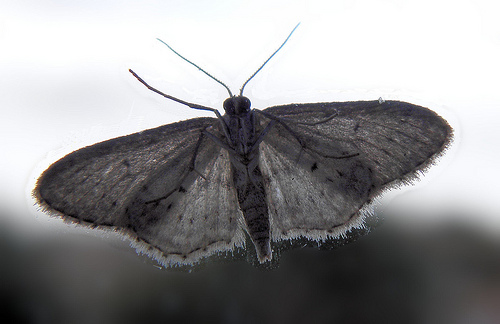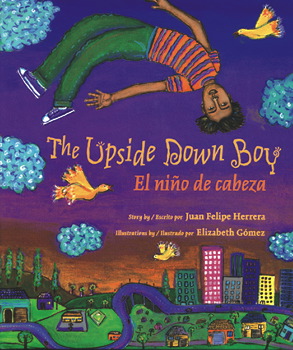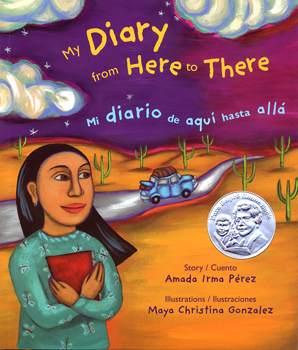Archive for Authors
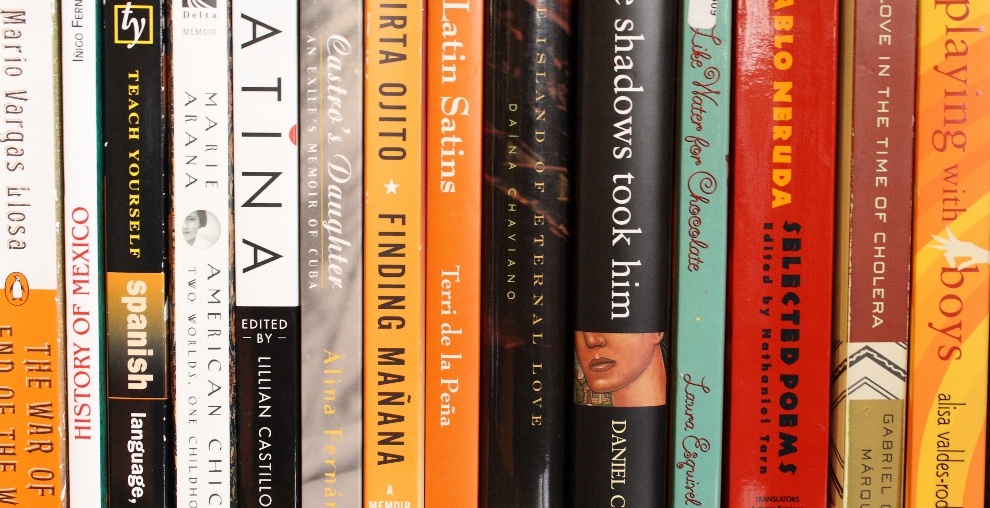
16
Sep 2014
Q&A with Alina García-Lapuerta
posted in: AuthorsI am pleased to be a part of the blog tour for biographer Alina García-Lapuerta’s first book, La Belle Créole: The Cuban Countess Who Captivated Havana, Madrid, and Paris! La Belle Créole recounts the history of Mercedes Santa Cruz y Montalvo, a Cuban-born aristocrat of the early- to mid-1800s. She is recognized as the earliest female Cuban writer. La Belle Créole was known for her beauty, singing, and writing.
This is the first English-language biography of the Mercedes Santa Cruz y Montalvo, and it results from seven years of research by García-Lapuerta. Read on my Q&A with the author!
How did you become interested in writing biographies? What made you transition from banking to writing? Have you always wanted to write?
I have enjoyed reading biographies since childhood – I can still remember one of the first books I checked out (on my own) from the school library: a biography of Queen Elizabeth I – I should have known then! Since college, I seemed to have naturally collected biographies of women – specifically women from the past. I really enjoy learning about different places and times through the prism of a person’s life.
There was no natural transition from banking to writing. Like many women, I took a break to raise my family – a break that took longer when my son had medical issues. Going back to the financial world wasn’t particularly appealing. I have always loved research and history, so biography combines the two very well. The tricky thing was finding the right subject, but when I found Mercedes, I knew I had found my subject.
I have always enjoyed writing – whether scribbling in journals or creating little stories when younger. Writing was also an enjoyable (and critical) part of my education and work. Perhaps more recently it was less creative and more analytical, but I think that helped me in the end with the biography, which needs to be readable but informative too.
 What particularly drew you to your subject, Mercedes Santa Cruz y Montalvo?
What particularly drew you to your subject, Mercedes Santa Cruz y Montalvo?
I was fascinated by the idea of a Cuban woman in 19th century Paris – what led her there? Her lush descriptions of Cuba were a delight to read. Also, the more I uncovered about her, the more remarkable her story seemed. It was very relatable to modern times – she had successfully recreated herself in a different world. She was a foreigner, operating in another language. The period she lived in generally meant that women had to accept their family’s choices, yet she was able to step away from their shadow, using her own initiative and talents.
Mercedes is now recognized as the earliest Cuban female writer – why was she not publicly acclaimed earlier?
There had long been a question of identity with Mercedes. She lived in France and wrote in French (although her best known work, Viaje a la Habana/La Havane was issued simultaneously in French and in a shorter Spanish version). She wrote about Cuba in her memoirs and travel writings, but it seemed that she was viewed almost as foreigner in her homeland. Recent scholarship has corrected this view. One scholar in particular has suggested that gender was a major factor in this debate.
What legacy did Mercedes leave for the modern world?
I would like to believe that her legacy is her image as a talented, strong – yet charming – woman in history. In more concrete terms, her legacy lies in her literary works – especially her unique accounts of her late 18th century Cuban childhood and her classic account of 19th century Cuban colonial society. Her lyrical descriptions of her homeland shine through even after over 170 years.
Less obviously, she has a musical legacy. She helped nurture countless musical talents through her celebrated Parisian salon. We can’t hear her own voice today, but she is part of a timeless musical chain that influences people today.
Did growing up in South Florida within the Cuban community influence your interest in this project?
Yes, growing up in South Florida in the Cuban community – with my Cuban relatives – certainly did influence my interest. My family definitely cherished and celebrated its Cuban heritage. There were books about Cuban history lying around and my grandmother in particular passed on lots of stories about life in Cuba. We were also lucky to have many old photos, which I have always loved. So it is not surprising that I am attracted to almost anything about Cuba, but particularly the pre-revolutionary world. I knew much less about the colonial period – but it had a mysterious appeal.
Did you find local support for the project? Any particular reaction from your Cuban family and friends or the wider Cuban community?
I found incredible support from the University of Miami’s Cuban Heritage Collection, which collects and preserves all things Cuban. They were always helpful in endless ways.
My Cuban family and friends were supportive of my project – they all liked the idea of something Cuban. However, I will admit that most of them didn’t have a clue who she was! I think this is because there is so much focus on the years just before the Cuban revolution and then the Castro era. There is less discussion about the colonial era.
But most Cubans – wherever they are – love the idea of celebrating a historical Cuban figure. So they like Mercedes!
no comments2
Dec 2011
Spirited Away
posted in: Authors, books, Isabel Allende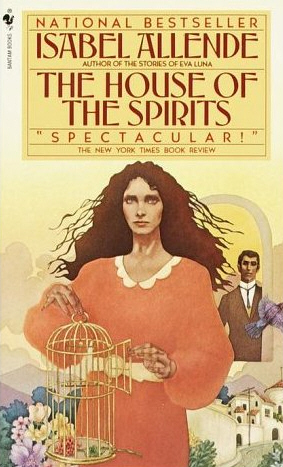
The House of the Spirits is like Latino Reading 101, to me, anyway. I have now read several works by Isabel Allende, and her writing is lyrical and moving. Her writing gallops at a wonderful pace, stopping here and there introspectively. The plots are wonderfully tangled and complicated. She plays the emotion in her characters like a harp. Incidentally, if you follow the Wikipedia page on Allende, you’ll find that she has faced as much criticism from her Latin American peers as she has found huge success worldwide. I won’t go into it here, but I do have to say that I am dumbfounded. I like her writing and her other books are even better than House, her debut novel.
This book was the first time I was introduced to magical realism, a popular writing style in Latin America. Magical realism is what it sounds like. In The House of the Spirits, it is introduced as a matter of fact that Rosa has green hair: “At birth Rosa was white and smooth, without a wrinkle, like a porcelain doll, with green hair and yellow eyes — the most beautiful creature to be born on earth since the days of original sin, as the midwife put it, making the sign of the cross.” Enter in giant dogs, an uncle who invents a flying machine, and the main character, Clara, who is both clairvoyant and can move things with her mind – and you get an interesting read. But wait, there’s more! The book takes place in an unnamed South American country that bears a striking resemblance to Allende’s home country, Chile. Hop on and gallop through the modern Latin American history while you’re at it.
Incidentally, the book was made into the Worst. Movie. Ever. I rarely ever like movies after I’ve read the book, but this movie was spectacularly awful. The acting, the rewriting that left out all the best parts, the mostly white cast – everything. I finally fell asleep watching Rose-uh and the Trew-A-buhs on Netflix. The movie really lost the Latin American feeling which permeated the book in a subtle, non-stereotypical way. Here’s a clip you can add to your awful movie files:
10
Nov 2011
Latina Self-Portraits and Helena Maria Viramontes
posted in: Authors, books, Helena Maria ViramontesSometimes I sit down to write and think, What do I write about? What interesting thing has happened to me that qualifies me to write a piece that is lucid on the topic of human nature? What can I say, it’s a writer’s neurosis. When I read works by Latina authors, I find myself relating to them, nodding my head and thinking, “Exactly!” and, “How did they know that?” It is then that I realize that writing what you know is hard because it’s actually writing everything that you take for granted.
Latina Self-Portraits, edited by Bridget Kevane and Juanita Herdia, is a somewhat older book (published in 2000 by University of New Mexico Press) that contains the interviews of 10 Latina authors, including Cherríe Moraga, Sandra Cisneros, and Julia Alvarez. The introduction is a bit scholarly (I actually think I bought this for a college project on Chicano literature), but the interviews are frank and interesting, so it really doesn’t matter whether your aim is to “[define] the literary space of Latina literature” or if you’re just interested in hearing what the authors had to say. I was astounded that even though the interviews took place in the late 1990s, the author’s thoughts and commentary on Latino culture are still so relevant. I did have to chuckle when Julia Alvarez, asked about a younger generation of Latino writers, says, “Oh yeah! Junot Díaz!”
Anyway, I was looking back over this book which I read a few years ago and wanted to focus on an author whose work I haven’t read. I picked Helena Maria Viramontes. Viramontes is the author of The Moths and Other Stories, Under the Feet of Jesus, and Their Dogs Came with Them.
The interview touches on several topics from farmworkers to her personal life to the influence of corridos. I LOVE that Viramontes says that the answer to whether to italicize phrases in Spanish is “absolutely not.” I feel the same way, at least for Latino literature. To me, Spanish is not a foreign language in our culture, so I don’t think the style rule applies.
Viramontes also talked about the writing process. Of the solitude of writers, she said, “We arrive in our seats with our sense of insecurities as human beings incapable of capturing the visions in our heads. With our open bleeding hearts, we arrive to make some understanding for ourselves and for the readers.”
One of Viramontes’s well-known short stories is “The Moths,” about a girl and her dying grandmother. The haunting story was inspired by an equally haunting photograph of a Japanese woman bathing her deformed child.
Viramontes writes a story of a girl caught between two cultures. The details are true. I can’t think of a better word, they’re just TRUE. The main character at one point remembers, “As I opened the door and stuck my head in, I would catch the gagging scent of toasting chile on the placa. . . . The chiles made my eyes water.”
Just yesterday I opened the window while toasting chiles on the placa, and wondered to myself why I don’t just roast them in the oven like I see gringos doing on television. Maybe it wouldn’t burn so much. But no, that wouldn’t be like my abuela did. And that simple part of making dinner made me remember my abuela and her housekeeping, her embroidery and tejidos, and sus hierbas for curing all ills. Today I read about my grandma in Viramontes’s story.
I won’t reveal more details because it would spoil such a short story. You have to read it yourself. But I think that this is the greatest compliment I can give an author – that when I read this story, I saw myself.
no comments19
Oct 2011
Children’s Book Press
posted in: Authors, books, Children's Books, UncategorizedI honestly don’t remember many pictures books from my childhood, though I know I read many. I started reading “chapter books” (I forgot that children call them that until my ten-year-old niece said it) when I was eight years old. I lovingly remember books by Laura Ingalls Wilder, Roald Dahl, Judy Blume, Gary Paulsen, and so on. But did I read anything written by a Latin@? No, I didn’t discover that until I found Sandra Cisneros at 14. Now, I know that there must be some childrens and YA books by Latinos out there, but I didn’t find it back then, and I read so voraciously from a young age that I quickly moved onto literary fiction adult titles to satisfy my appetite.
Now that I have my own child, I am interested in finding children’s books that feature Hispanics. So the other day I was delighted to find a whole shelf dedicated to mostly bilingual books in the kid’s section at the public library. (Hey, I live in Alabama – it’s a big deal to find that treasure trove. Our stores’ sections for Latino literature are as limited as the food, which you find in the Asian or beans sections at Wal-mart.)
Anyway, on to these two bilingual books, both by Children’s Book Press, a non-profit publisher of multicultural books for kids.
The Upside Down Boy is by Juan Felipe Herrera. This book is written in a melodious voice, bringing to mind, perhaps, a kid’s magical realism. Kids will love the story of Juanito (based on the author’s life), who moves to a new place and school and has to learn English. With his teacher and family as support, he discovers his gift for poetry and music and learns English. Parents (okay, maybe just me) will go wild for the beautiful lyricism:
“We are finger painting.
I make wild suns with my open hands.
Crazy tomato cars and cucumber sombreros —
I write my name with seven chiles.”
The illustrations are by Elizabeth Gomez. The creative, fantastical images accompany the writing perfectly.
I’m so excited about this author and the other works I saw on his website, and I actually found out that two more are available at my library. I will definitely be reading more by him!
My Diary from Here to There, by Amada Irma Pérez, tells Amada’s story of crossing the border via diary entries. She was as scared as any kid who is moving to a
new country. She finds out that her dad is actually an American citizen. He goes to find work and leaves the family behind for a short time while applying for green cards. César Chávez and the grape boycott make a cameo in the book!
I was impressed by the clear writing that is honest about the scary situations the family faced; but the tone keeps it interesting and wouldn’t freak a child out (I was really wondering how that would pan out when I started reading).
Perez’s website shows two other books, and she also does speaking engagements. I love her final words for tips to aspiring authors: “You ARE a WRITER because you write, not because you publish!”
The book is illustrated by Maya Christina Gonzalez. I loved the vivid colors of the art that has a definite Chican@ style.
no comments17
Oct 2011
The Turkish Lover
posted in: Authors, books, Esmeralda Santiago, Puerto Rico, UncategorizedEsmeralda Santiago’s book The Turkish Lover is about, well, her Turkish lover. If by lover you mean a narcissistic, pathologically lying, philandering, and controlling abuser.
The book starts out with Santiago’s move from Puerto Rico to the U.S. Her mother is scraping by, working as a seamstress, while Santiago begins to navigate the dichotomy between U.S. and Puerto Rican cultures. One scene from the book could have been pulled from my own life, when Santiago’s mother tells her:
“This is why you have to learn English, graduate from high school, and find work in offices, not factories,” she said in a voice unsteady with controlled anger. “So many humiliations, all because I didn’t get an education.”
So of course what Santiago does is exactly the opposite of what is expected from una “nena puertoriqueña decente” – getting a job, moving out, dating, moving to Florida with Ulvi, the list goes on. The mind control begins subtly in New York, when Ulvi criticizes her clothes and mannerisms, expecting her to change them, and then progressively get worse. The split that arises between her and her family and her culture is painful to read about. Santiago writes:
“I never called home because I knew Mami didn’t approve of my life with Ulvi and I didn’t want to hear the reproach in her voice. Except for me, no one in my family was mucho f a correspondent. Mami didn’t have the time to answer letters, and I didn’t know what to say if I were to write one. . . . months went by and I neither spoke to nor heard from anyone in Brooklyn. Bad news, I knew, would find me. Good news would accumulate until the next time we saw each other.”
This book was well-written, but hard to read. It wasn’t the writing but that I was so frustrated with the author – I kept thinking, “No, don’t go back to him! Oh my God, after what happened you’re going back? Why? Why? Why?” But it can’t be as hard as what she went through, slowly extricating herself from Ulvi’s grasp.
Luckily, Santiago was able to slowly break out of the relationship with this Ulvi character and graduate from Harvard. Spoiler alert: I can’t help but share some last lines of the book, which leave you wanting more:
“I was returning to my family free of a man who disdained my people and me. I was returning having exceeded even the most optimistic expectations for a poor girl from a huge family raised by a single mother under the most challenging conditions in a hostil culture and environment. . . . I was so proud of myself, I strutted toward the Departures gates. I had forgotten the Puerto Rican saying that Tata had muttered in our direction whenever we boasted about something we had done: Alábate pollo, que mañana le guisan. Boast now, chicken, tomorrow you’ll be stew.”
Not everybody is able to get themselves out of relationships that are physical or emotionally abusive. If you know someone who is abused, one place you can go for help is the National Domestic Violence Hotline at 1-800-799-SAFE.
no comments
























